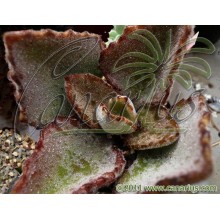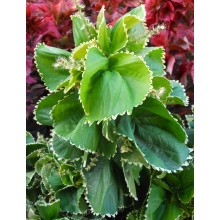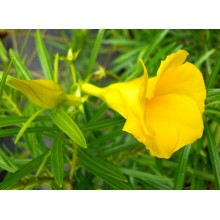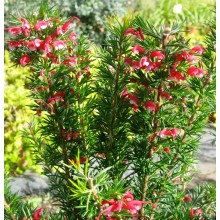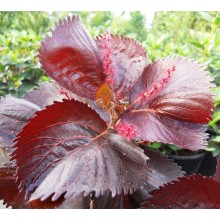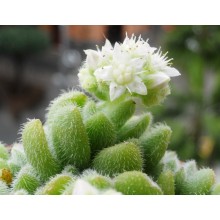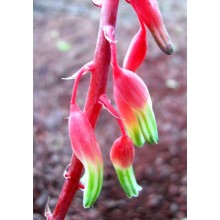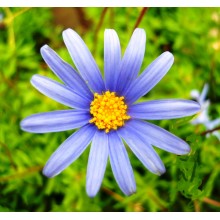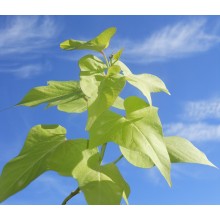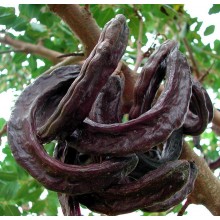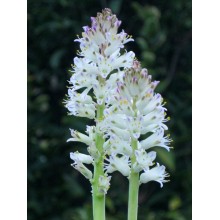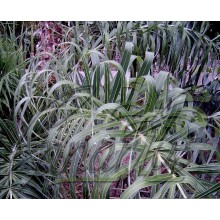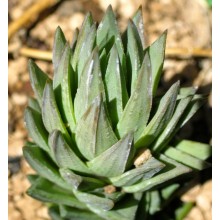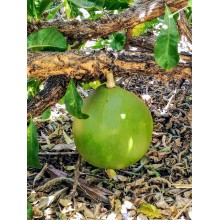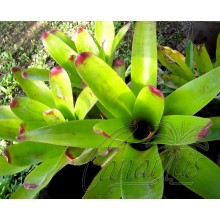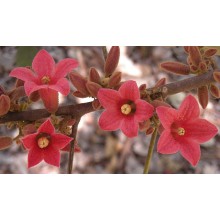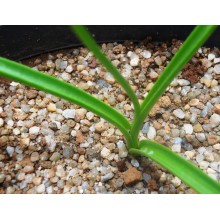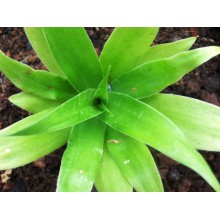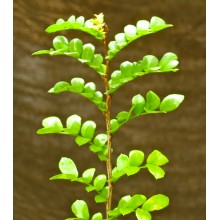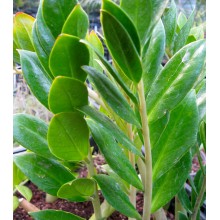I più venduti
I prodotti più venduti

-
Kalanchoe beharensis cv. Fang.
Kalanchoe beharensis cv. Fang.
Felty, thick triangular leaves with lots of bumps and grooves. It is a compact, smaller form of a fabulous Kalanchoe from Southern Madagascar.
10,40 € -
Acalypha 'Hoffmannii'
Acalypha 'Hoffmannii'
Wow! This old cultivar has unusually round and contorted leaves. These are dark-green with dainty cream-white margins.
23,20 € -
Cascabela thevetia
Cascabela thevetia
American shrub often called "yellow oleander" because of its closeness to Nerium oleander. It is easy to grow in Warm Mediterranean to Tropical conditions. It responds very well to pruning so it can be easily wintered indoors. It was formerly named Thevetia peruviana
28,30 € -
Acalypha 'Mooreana'
Acalypha 'Mooreana'
Red to almost-Black, round, ruffled leaves ! Mooreana has a more erect habit and does not spread horizontally as much as other cultivars. Just as easy to grow as any other acalypha.
23,20 € -
Sedum mocinianum
Sedum mocinianum
This "different" hairy Sedum is a small beauty from from high elevations in Mexico. It is a very compact plant with ovate rounded leaves fully coated in white "hairs". It blooms in March with bouquets of white flowers.
10,30 € -
Gasteria sp. Schweinfurthii
Gasteria sp. Schweinfurthii
This is a quite obscure species, because the name shweinfurthii was never described officialy. Nevertheless it is a spectacular plant with bold leaves and showy flower spikes.
10,20 € -
Felicia amelloides
Felicia amelloides
Felicia amelloides is an attractive blue daisy, native to South Africa, from sandy coastal areas with rain all year round. It is easy in cultivation, in pots or as a mixed-border plant. It endures a wide range of temperatures, including some light frost.
10,50 € -
Ipomoea batatas Margarita
Ipomoea batatas Margarita
Chartreuse-leaved selection of the common sweet potato. This is a fabulous ornamental, used as a ground cover in Mediterranean to Tropical climate. Leaves are truly different, because of their yellowish, healthy colour. It is evergreen and can stand a reasonable amount of neglect.
8,40 € -
Ceratonia siliqua - Carob tree
Ceratonia siliqua - Carob tree
Carob trees are culivated throughout the Mediterranean. Fruits are highly nutritious: sweet, fibrous and juicy with a typical aroma reminiscent of chocolate. The ree itself is very ornamental too, with leathery glosssy dark green foliage.
36,80 € -
Lachenalia liliiflora
Lachenalia liliiflora
Each bulb bears two lanceolate leaves per year and produces showy spikes of white flowers, about 20 cm tall in March or April, just before leaves die off.
10,60 € -
Allagoptera arenaria
Allagoptera arenaria
h= 20-40 cm - Cont. 16 cm. Low trunkless feather palm from the coastal dunes of Brasil, with elegant ruffled leaves coming out of the ground. Flowers are borne on unbranched spikes.Allagoptera needs drained sandy soil, enjoys coastal locations and can take light freezes. It can grow outdoors in coastal Mediterranean gardens.
27,60 € -
Haworthia glauca herrei
Haworthia glauca herrei
Beautiful Haworthia with glaucous leaves, native to the Eastern Cape, adapted to full sun. It is clumping and stem forming, so it will eventually form a large attractive specimen.
10,40 € -
Crescentia cujete - Calabash Tree
Crescentia cujete - Calabash Tree
Crescentia cujete is not a typical fruit tree because fruits are not edible, but they are still some of the most useful fruits in this world.
72,00 € -
Neoregelia cruenta 'Sun King'
Neoregelia cruenta 'Sun King'
This clone of Neregelia cruenta var. cruenta is larger in size and makes an imposing specimes in the landscape. It has stiff thick leaves, bright green with glossy pink tips.
26,30 € -
Brachychiton bidwillii
Brachychiton bidwillii
Ornamental deciduous shrub to small tree native to Australia, 2-4 m tall . It flowers profusely before the new leaves appear. This is the cold-hardier form from Southern Queensland. It has beautiful deeply-lobed leaves and it can take frost to about -5 C.
29,30 € -
Crinum luteolum
Crinum luteolum
2 year old bulb - Yellow flowered desert Crinum native to dry, hot areas in South Australia. It is closely related to the white-flowered Crinum flaccidum. It is a beautiful compact plant, and it is rare in cultivation.
98,20 € -
Dracaena transvaalensis
Dracaena transvaalensis
Ornamental, semi-succulent dragon-tree from summer rainfall areas South Africa. It grows on rocky slopes, attaining heights of 2-6 m. It is very uncommon in cultivation! This Dracaena is relativey fast growing and can attain blooming size in les than ten years. It will thrive in Mediterranean conditions, with little or no frost.
54,60 € -
Schotia afra
Schotia afra
Small evergreen tree, appreciated for its conspicuous pink-red flowers occuring in autumn. It is perfect for Mediterranean conditions and will be a nice accent for sunny water-wise gardens. Its gnarled branches give to the tree a bonsai appearance
39,20 € -
Zamioculcas zamiifolia
Zamioculcas zamiifolia
This aroid from semi-dry areas is named so because of the similarity with some cycads in the genus Zamia. It is native to E - SE Africa, that resists to many different conditions. Its showy glossy leaves are produced from a stout underground, succulent rhizome. It is very easy to grow, and the unusual flowers are a nice addition.It is normally evergreen,...
12,40 €















